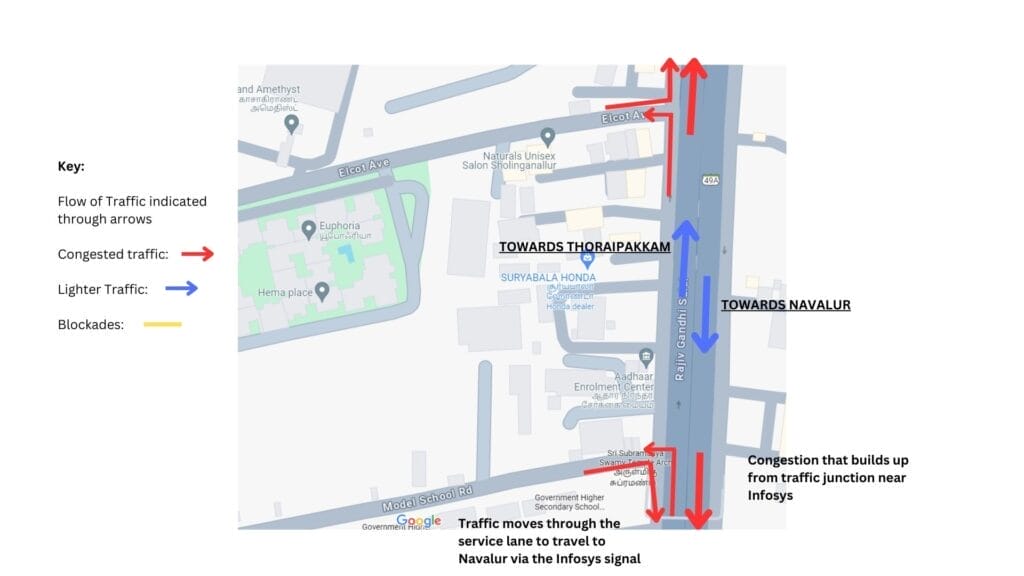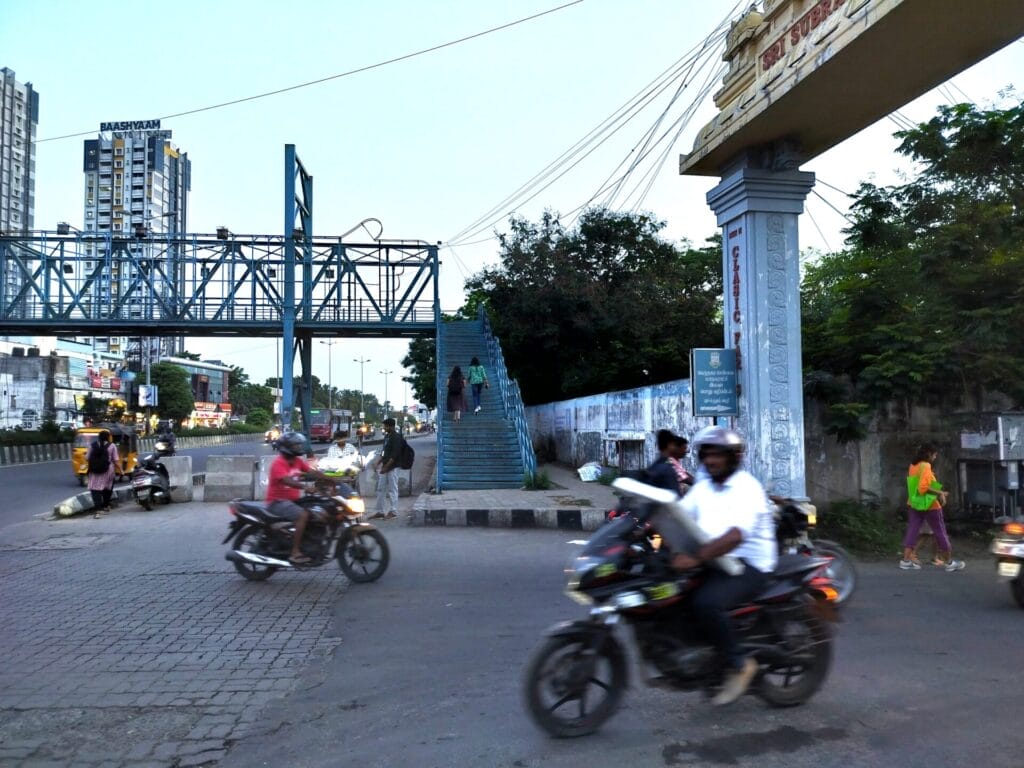Few things are more active than a WhatsApp group used by suburban residents in Chennai to lodge complaints. The group serves as a platform for residents to voice their problems, leading to debates and polls. Loud calls for action often rally the entire online community to react with a series of ‘thumbs-up’ emojis. However, it is rare for these proposed solutions to extend beyond the online realm, and even rarer for residents to take tangible steps towards implementing them.
But, here is a group that went beyond registering complaints and solved a long-term traffic issue with collective activism, in Kumarasamy Nagar.
Read more: Kasturba Nagar programme led by residents’ group turns waste into soil
How it all started
A few months ago, Karthik Kannan, a resident of Kumarasamy Nagar in Sholinganallur, needed to catch a flight. He left his house on time and would have comfortably reached the airport with enough time for the check-in. “I had barely left the house when I got stuck in Elcot Avenue (the road that leads to OMR) for 45 minutes,” he says, recounting his experience.
“I’m lucky that I still caught the flight.” This propelled him to examine the problem of congestion on the small, local road, and try to solve it.

This neighborhood is connected to Old Mahabalipuram Road (now called Rajiv Gandhi Salai) by two small roads: Elcot Avenue and Model School Road. Both roads, particularly Elcot Avenue, are prone to congestion due to their narrow width and their proximity to the busy Sholinganallur Junction.
The backlog of traffic from the junction, worsened by ongoing Metro construction that runs through the middle of the road, makes it difficult for commuters to exit Elcot Avenue and join the main road. The congestion is further exacerbated by vehicles traveling from Navalur and Siruseri trying to enter the road, which blocks the vehicles attempting to exit.
On the other end, at Model School Road, which is named after the nearby government school, there is another traffic build-up. This congestion is caused by vehicles turning right onto the service lane to head towards Navalur. This movement clashes with those trying to enter the service lane from the main road.
Planning with community members
Kannan raised the issue on one of the neighbourhood WhatsApp groups, Smart Sholls. The group’s description reads — “the ONLY purpose of this group is to discuss matters and events related to security, pollution, road, traffic, waters, education and health.” Several people responded, and a meeting was set up to discuss possible solutions. “Ultimately, only eight or nine people showed up, which was expected,” says Ramaswamy Rangachari, an active community member. “We created a separate group and started planning.”
The proposed solution to mitigate the congestion in the area was rather simple. “We planned to put barricades on the right side of Elcot Avenue, making people who exit the road take a compulsory left,” says Rangachari. This move stops commuters from the main road entering the smaller road, therefore streamlining the flow of traffic. A similar model was planned to be implemented at the mouth of Model School Road, with the right turn to the service lane being entirely cut off.

Read more: After long wait for landowners, construction set to begin in EVP Township
Making it a reality

Kannan, using some connections at the Tambaram Police Commissionerate, was able to get a meeting with officials at Sholinganallur, and the group presented their suggestions to reduce the traffic jams.
“There are more than a thousand families in Kumarasamy Nagar,” says S Karunanidhi, Sub-Inspector at the Sholinganallur Police Station. “If they come to us with a problem, it’s our duty to help them.” Under the advice of the resident group, the police placed barricades at the recommended points. They made a point to use cement barricades instead of metal frames, to ensure that people would not move them out of the way.
The reception to these changes has been largely positive, with residents noticing that flow of traffic was smooth and there was reduced congestion on the roads. The complaints that made themselves known were largely regarding the redirection of some traffic to Model School Road from Elcot Avenue, but the prevailing opinion is positive.
“Only after we left the WhatsApp group, could we get any work done,” says Kannan, with a chuckle. “We are all ‘WhatsApp Warriors’, and so hundreds of messages would come in with different ideas and then we would never get anywhere.”
Community WhatsApp groups are well-meaning spaces, but they can get cluttered and repetitive. True improvement requires tangible action, one that steps out of the virtual world of sign-posting.